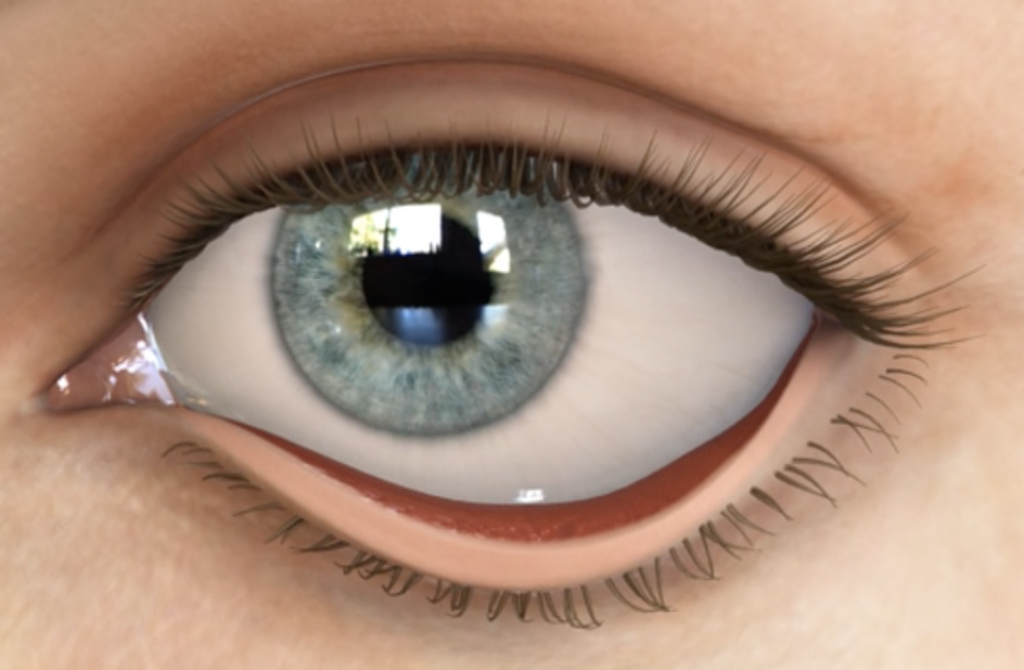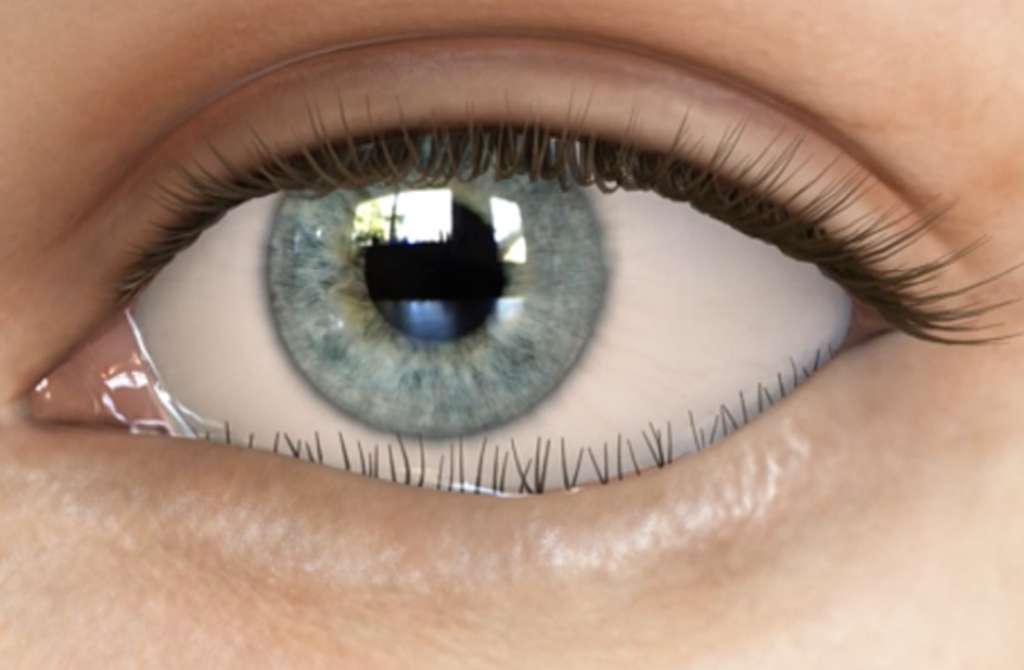Oculoplastics
Caring for vision includes more than just the eye itself. Structures around the eye, such as the eyelids, tear ducts, eyelashes, and eye socket (known as the orbit), play a key role in our ocular health.

Ectropion
Proper eyelid positioning is essential for a healthy eye. The lower eyelid should hug the surface of the eye to protect it and help maintain adequate lubrication. Sometimes, the lower eyelid may droop or roll away from the surface of the eye, leaving it exposed. This rolling-out or sagging position of the lower eyelid is known as ectropion and can cause tearing, redness, irritation, and contribute to blurry vision. Ectropion may be caused by a variety of conditions but can be diagnosed with a routine eye examination. Typically, repositioning of the eyelid can help with many of the aforementioned symptoms and prevent long term damage.

Entropion
As previously mentioned, eyelid positioning is important for maintaining a healthy ocular surface. Occasionally, the upper or lower eyelids may roll inward with the eyelashes directed toward the eye. This “rolled-in” position of the eyelid is known as entropion and can cause tearing, redness, irritation, and blurry vision. If not treated promptly, it may even lead to scarring of the cornea. Entropion may be caused by a variety of conditions but can be diagnosed with a routine eye examination. Typically, repositioning of the eyelid leads to resolution of symptoms and can prevent further damage of the ocular surface.
Ptosis
Often referred to as a “droopy eyelid”, ptosis is an issue with positioning of the upper eyelid. Ptosis may be secondary to trauma, a neurological condition, prior surgery, and, most commonly, slippage of a muscle in the upper eyelid over time.
A thorough evaluation is required to determine the cause of ptosis. Oftentimes, a short procedure allows for repositioning of the eyelid. Occasionally, additional testing is required to rule out other causes of ptosis.
Ptosis can also occur in children. This can lead to poor visual development known as amblyopia. It is crucial that children with ptosis be promptly evaluated to prevent permanent visual impairment.
Nasolacrimal Duct Obstruction
Our eyes are constantly producing tears to help maintain a healthy surface of the eye. As the tears bathe the eye they then drain into tear ducts, which are located toward the nose on both the upper and lower eyelids. From there the tears drain down into the nose. Occasionally, this drainage system can become blocked. Such a blockage can lead to significant tearing to the point where tears run down the cheek. This condition, known as nasolacrimal duct obstruction, can be diagnosed in the office and subsequent treatment options depend on the specifics of each case.
If you have any concerns about the health of your eyes or structures surrounding the eyes, please contact our clinic.
For additional information about these and other conditions, please visit the American Society of Ophthalmic Plastic and Reconstructive Surgery website.